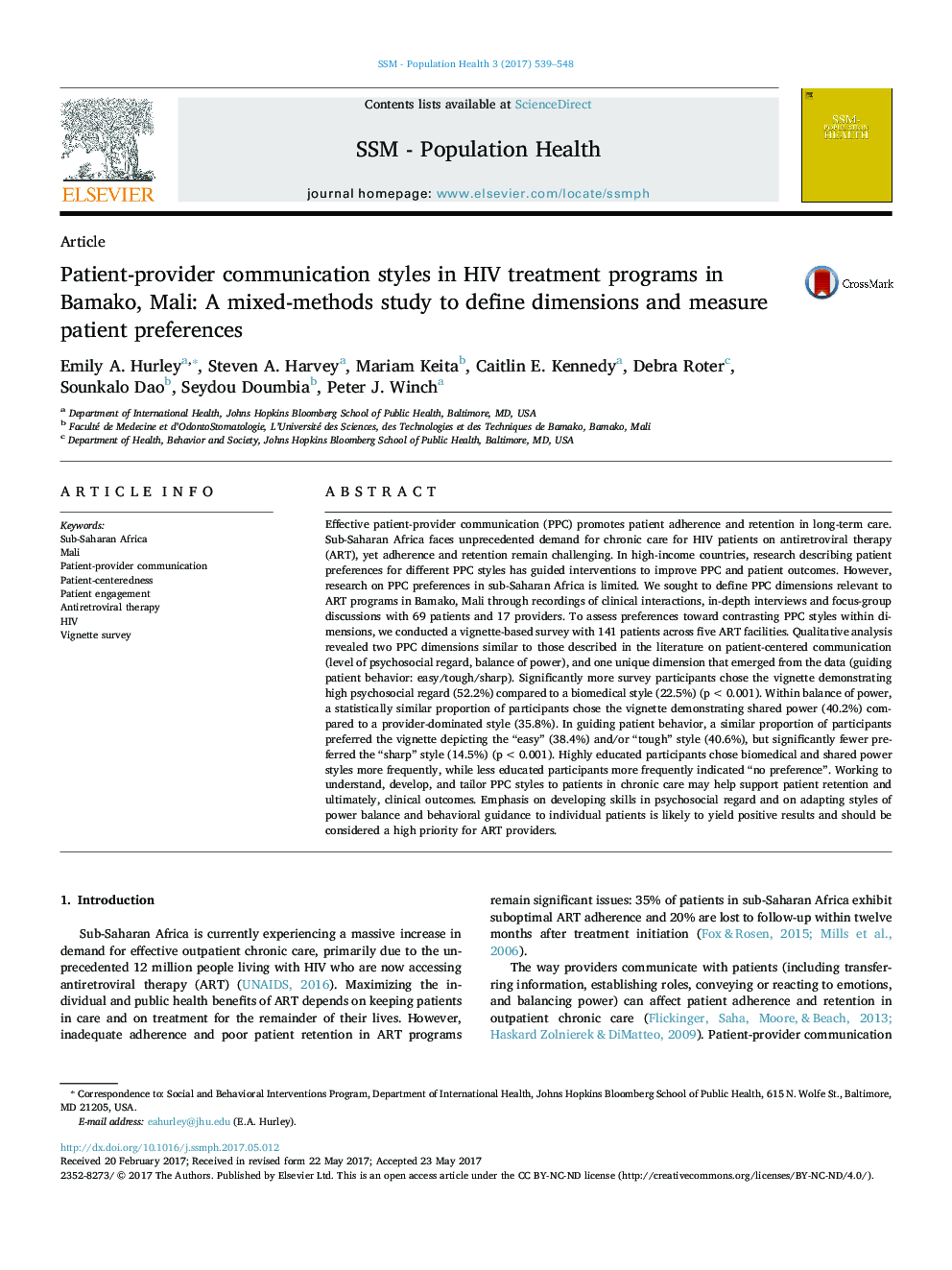| Article ID | Journal | Published Year | Pages | File Type |
|---|---|---|---|---|
| 5123287 | SSM - Population Health | 2017 | 10 Pages |
â¢Examines patient preferences among culturally-relevant PPC styles.â¢Most patients preferred the “high psychosocial regard” over the “biomedical” style.â¢Patients were split in preference for “shared power” versus “provider-dominant”.â¢Preferences were split between “easy” versus “tough” style of recommending behavior change.â¢Patients with lower education were more likely to indicate “no preference” among PPC styles.
Effective patient-provider communication (PPC) promotes patient adherence and retention in long-term care. Sub-Saharan Africa faces unprecedented demand for chronic care for HIV patients on antiretroviral therapy (ART), yet adherence and retention remain challenging. In high-income countries, research describing patient preferences for different PPC styles has guided interventions to improve PPC and patient outcomes. However, research on PPC preferences in sub-Saharan Africa is limited. We sought to define PPC dimensions relevant to ART programs in Bamako, Mali through recordings of clinical interactions, in-depth interviews and focus-group discussions with 69 patients and 17 providers. To assess preferences toward contrasting PPC styles within dimensions, we conducted a vignette-based survey with 141 patients across five ART facilities. Qualitative analysis revealed two PPC dimensions similar to those described in the literature on patient-centered communication (level of psychosocial regard, balance of power), and one unique dimension that emerged from the data (guiding patient behavior: easy/tough/sharp). Significantly more survey participants chose the vignette demonstrating high psychosocial regard (52.2%) compared to a biomedical style (22.5%) (p<0.001). Within balance of power, a statistically similar proportion of participants chose the vignette demonstrating shared power (40.2%) compared to a provider-dominated style (35.8%). In guiding patient behavior, a similar proportion of participants preferred the vignette depicting the “easy” (38.4%) and/or “tough” style (40.6%), but significantly fewer preferred the “sharp” style (14.5%) (p<0.001). Highly educated participants chose biomedical and shared power styles more frequently, while less educated participants more frequently indicated “no preference”. Working to understand, develop, and tailor PPC styles to patients in chronic care may help support patient retention and ultimately, clinical outcomes. Emphasis on developing skills in psychosocial regard and on adapting styles of power balance and behavioral guidance to individual patients is likely to yield positive results and should be considered a high priority for ART providers.
